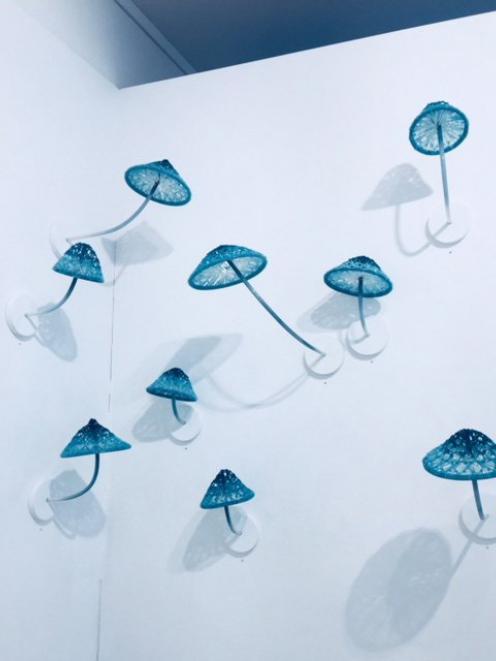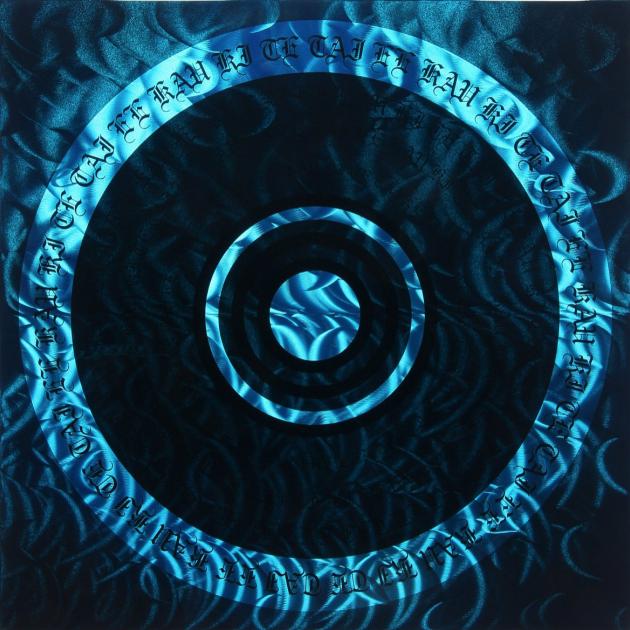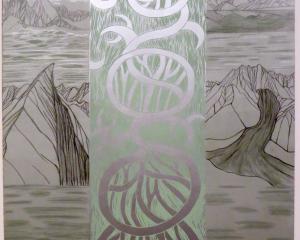In this week's Art Seen, Laura Elliott looks at exhibitions from Andi Regan, Peter James Smith, and Israel Birch
 Pixie’s Parasol, by Andi Regan
''Hidden Kingdoms'', Andi Regan (Hullabaloo Art Space, Cromwell)
Pixie’s Parasol, by Andi Regan
''Hidden Kingdoms'', Andi Regan (Hullabaloo Art Space, Cromwell)

Although a serious message underlies Andi Regan's work, it invariably contains a sense of fun as well. Walking into her exhibitions is a bit like entering a dream world, the eponymous ''Hidden Kingdoms''. She has the knack of sharing with her audience the transformative imagination that comes easily in childhood and is often drowned out by responsibility and stress in later life. Her latest collection focuses on fungi, and turns a fairly unromantic subject into something delightful and thought-provoking.
Each piece in the exhibition is intricately made, but creates an impression of simplicity. Regan's signature style utilises plastic cable ties, a man-made utilitarian object, a small but necessary cog in the wheel of progress and technology, and turns them into striking sculptures of natural, living things. That deliberate conjunction of the organic and the manufactured encourages reflection on the human impact on the environment.
Our priorities and perceptions of what is beautiful and significant can become clouded by the modern drive to constantly have more and be better, to have everything instantly and easily, without stopping to think of the consequences and what the world might lose as a result. And we often forget what treasures and moments of wonder and happiness can be found in the natural world around us, if we just take a moment to stop, look, and search.
 Of Twilight’s Repeated Measure, by Peter James Smith
''Fugitive Light'', Peter James Smith (Milford Galleries, Queenstown)
Of Twilight’s Repeated Measure, by Peter James Smith
''Fugitive Light'', Peter James Smith (Milford Galleries, Queenstown)

Peter James Smith's ''Fugitive Light'' is like opening a door and stepping back in time or into a book, as if you're looking through the eyes of a long-ago figure, existing in a meld of art, science, nature and spirituality. The evocative landscapes capture the ''fugitive'' light, often the last glow in the sky, those brief moments in the evening before the darkness of night casts a veil on the scene below.
The land we look upon is constantly changing, ecologically and through the expansion of knowledge and developing technology. As our minds change, so too does the way we look at the world. The landscape will never again be what it was a minute ago, a year ago, a century ago, yet there is a sense of continuity and perpetuity, as if it will always be there, containing the familiar and the places yet to be explored.
Smith brings together past and present, translating the sights of his own travels and life experience on to canvas, but superimposing excerpts of writing from old ship logs and explorers journals, figures from historical data, mathematical equations and astronomical notations.
The eye manages to take in both seamlessly, and its as if you're back in that time of early discovery, as if the words are scrolling past your vision, and you're literally seeing the rapid thoughts and calculations from the mind of another form in front of you.
 E Kau Ki Te Tai E, by Israel Birch
''The Review 2018'' (Milford Galleries, Queenstown)
E Kau Ki Te Tai E, by Israel Birch
''The Review 2018'' (Milford Galleries, Queenstown)

The annual review at Milford Galleries in Queenstown is always a highlight on the Central Otago arts calendar, offering a sample box selection of some of the country's most talented artists. The exhibition is curated to include different media, with as much emphasis on sculpture as painting, and styles that range from abstraction to photographic realism.
Among the highlights, Yukari Kaihori's watercolour and oil Sweet Dreams are abstracted compositions, rich in texture and tones of lilac, mauve and blue, conveying a feeling of melancholy and inspiration. Israel Birch's Kura Pounamu and E Kau Ki Te Tai E are equally beautiful and arresting.
Birch masterfully uses repeated shape and pattern, shadow and light, texture and reflection, and creates a sense of infinite space and depth that goes beyond the traditional use of perspective and the illusion of three-dimensionality. E Kau Ki Te Tai E seems almost alive with movement, like the glow of bioluminescence in water or uncurling ribbons of blue flame.
One of the most striking pieces is a new work by Neil Dawson, the spherical Atmosphere, which hangs suspended and changes in appearance and tone from every angle.
Created from stainless steel and painted silver on the outside and gold within, in direct light it glows like a jewel, while in the shadow the silver darkens and takes on the mystery and eeriness of of a moonlit night.







![Untitled (c. mid 1990s, [pink 3]), by Martin Thompson, 415mm×590mm. Photo: courtesy of Brett...](https://www.odt.co.nz/sites/default/files/styles/odt_landscape_small_related_stories/public/story/2024/02/untitled_pink_3.jpg?itok=Q0aQrc9o)




